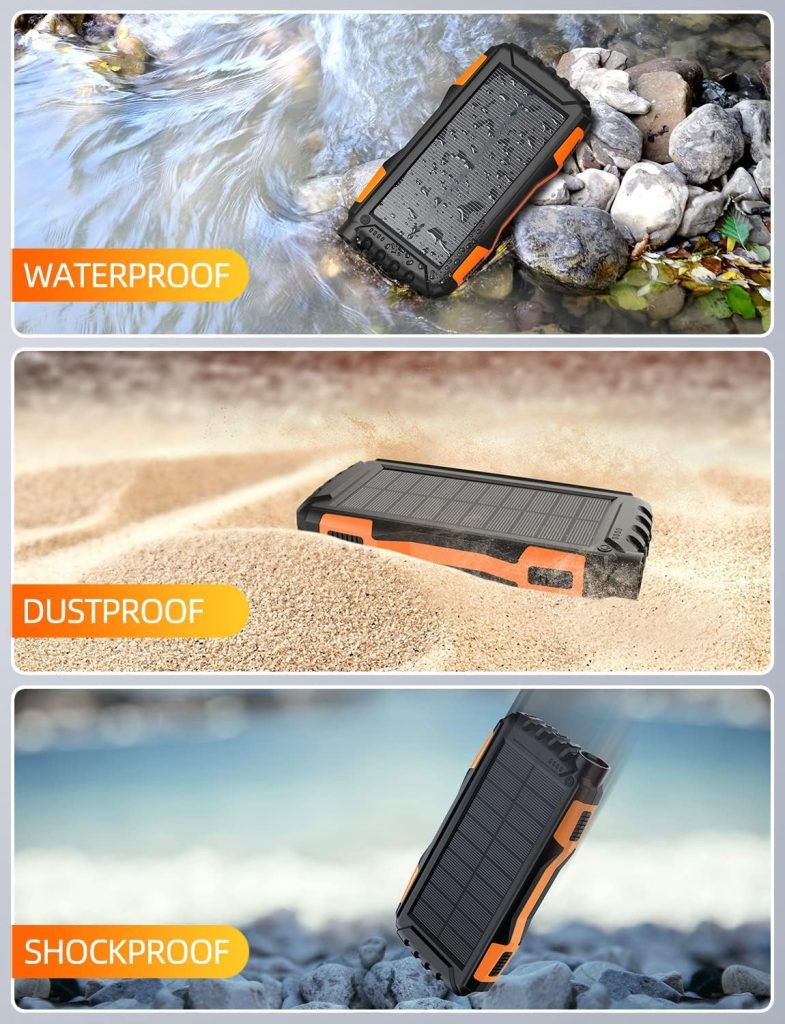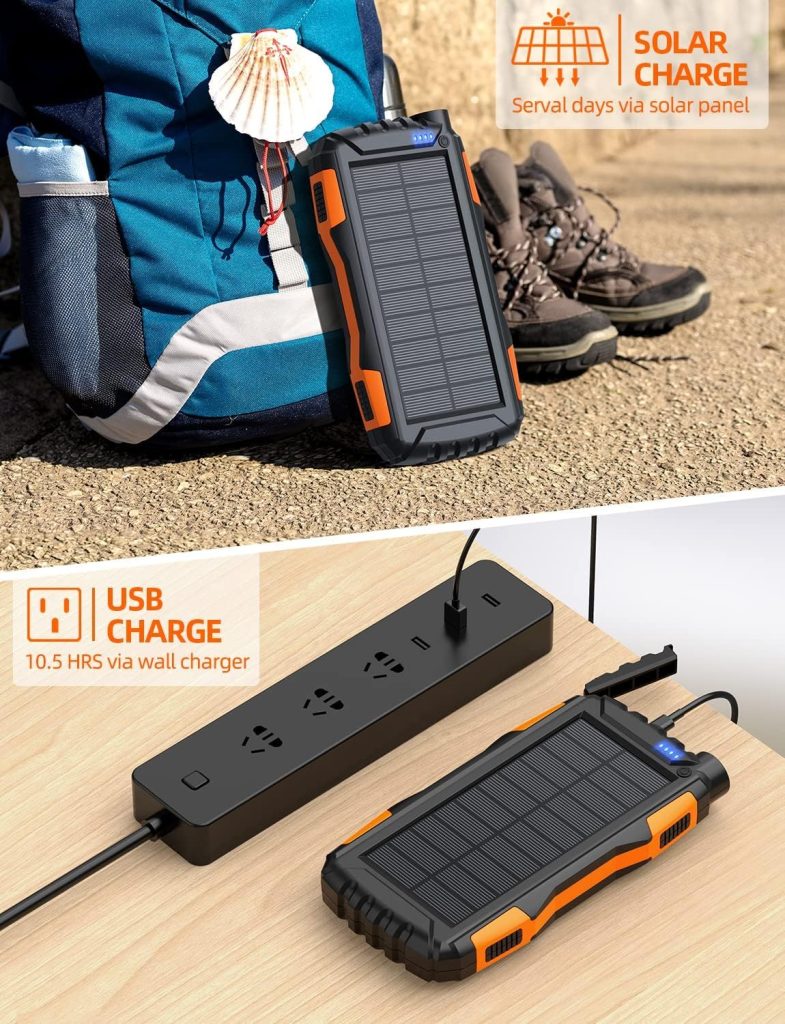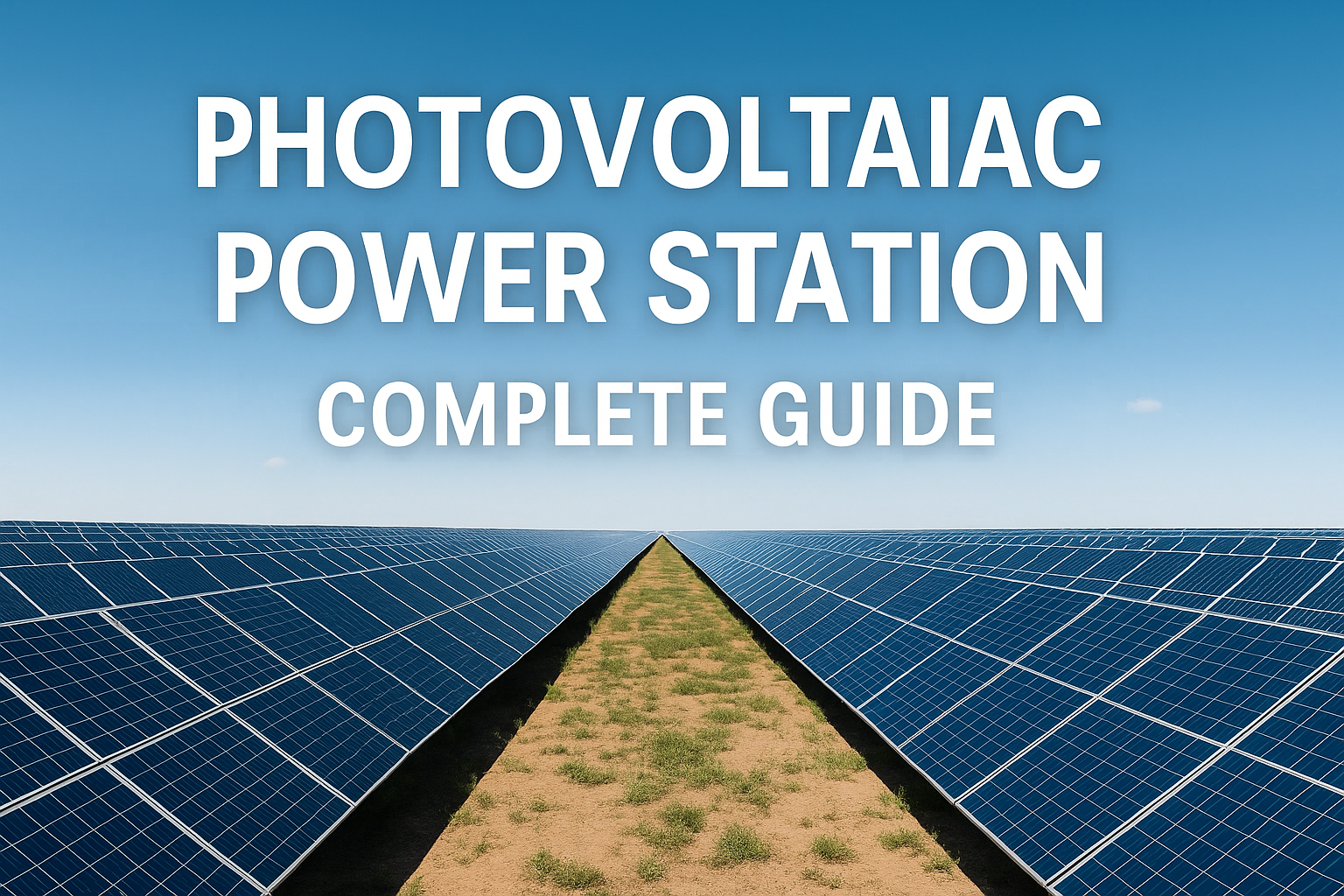Running out of battery is one of the most frustrating things that can happen—especially when you’re outdoors, traveling, or dealing with a power outage. That’s where solar power banks shine. They provide portable energy storage and the ability to recharge from the sun when outlets aren’t available.
One model that’s been making waves is the Power-Bank-Solar-Charger 42800mAh Portable Charger (Orange). It’s tough, waterproof, and powerful, ranking as the #1 Best Seller in Cell Phone Solar Chargers on Amazon. With over 11,600 customer reviews and a 4.2-star rating, it’s clearly popular—but does it really deliver?
In this detailed review, we’ll break down its design, battery performance, solar capabilities, pros and cons, and real-world use cases so you can decide if it’s the best solar power bank for your needs in 2025.
Quick Specs at a Glance
- Capacity: 42,800mAh high-density lithium polymer battery
- Solar Panel: Built-in panel (emergency use only)
- Outputs: 2 × USB (5V/3.1A), QC 3.0 fast charging supported
- Flashlight: Super bright LED, 100-hour runtime
- Durability: IP67 waterproof, dust-proof, drop-proof
- Size & Weight: 7.48 × 3.94 × 1.02 in, 1.1 lbs
- Material: Heavy-duty ABS plastic (heat and chemical resistant)
- Ranking: #233 in Cell Phones & Accessories, #1 in Solar Chargers
- Manufacturer: Dongguan Xionel Electronic Technology Co., Ltd
Rugged Design and Build Quality
One of the first things you notice is its rugged construction. The casing is made from professional-grade ABS, a material chosen for:
- Heat resistance
- Scratch-proof hardness
- Impact absorption and toughness
It’s rated IP67 waterproof, meaning it can handle rain, splashes, and even brief immersion. Combined with its dust-proof and drop-proof build, it’s made for outdoor adventures and emergency use.
The orange color isn’t just stylish—it makes it easy to spot in your backpack, campsite, or car kit.

Massive Battery Capacity
The headline feature is the 42,800mAh battery. That’s significantly larger than most solar chargers. Here’s what it means in practical use:
- iPhone 14 (~3,200mAh): 12–13 full charges
- Samsung Galaxy S23 Ultra (~5,000mAh): 8 charges
- iPad Air (~7,600mAh): 5–6 charges
This makes it ideal for:
- Multi-day camping trips
- Long international travel
- Backup during extended blackouts
- Sharing with family or multiple devices
Despite the large capacity, it weighs only 1.1 pounds, making it easy to carry in a backpack.
Charging Performance
The charger includes two USB output ports and supports QC 3.0 fast charging. If your device is compatible, you’ll notice a big difference in charging speed:
- Smartphones: 0–50% in ~30 minutes
- Tablets: 2–3 hours for a full charge
- Smaller devices (earbuds, wearables): under 1 hour
And since it has dual outputs, you can charge two devices at once without losing too much speed.
Solar Charging: Great for Emergencies
Yes, this power bank includes a built-in solar panel, but here’s the important detail:
- Solar charging is very slow. Fully recharging 42,800mAh via sunlight could take days.
- Use it as a backup, not the main source. It’s designed to provide enough juice in emergencies, not replace wall charging.
- Daily charging tip: Use a charger rated at 5V/2A or higher for best results.
So think of the solar panel as your “just in case” option when you’re completely off-grid.
Built-in Flashlight
The integrated LED flashlight is more powerful than most included in power banks. It has a long range and can run for up to 100 hours continuously on a full charge.
Perfect for:
- Night camping
- Hiking after dark
- Blackouts and emergencies
- Roadside use at night
This feature makes it more than just a charger—it doubles as survival gear.
Durability and Outdoor Readiness
This model is designed to survive tough conditions:
- Waterproof: Rain and splashes are no problem.
- Dust-proof: Great for deserts, beaches, and outdoor work.
- Shock-resistant: Handles drops and rough handling.
If you’re a camper, hiker, prepper, or just want a reliable emergency backup, this power bank checks all the boxes.
Pros and Cons
✅ Pros
- Huge 42,800mAh capacity (up to 13 phone charges)
- QC 3.0 fast charging support
- Dual USB outputs for multiple devices
- IP67 waterproof, dust-proof, and drop-proof
- Rugged ABS shell built for extreme conditions
- Super bright flashlight with 100-hour runtime
- Emergency solar charging option
- Excellent value compared to similar brands
❌ Cons
- Solar charging is too slow for daily use
- Long recharge time via wall (8–10 hours)
- Slightly bulky for pocket carry (better in a backpack)

Comparison with Competitors
vs. Anker PowerCore Solar 20000
- Capacity: 42,800mAh vs 20,000mAh → Winner: Power-Bank-Solar-Charger
- Durability: Both rugged, but this one has higher IP rating
- Portability: Anker is smaller and lighter
- Verdict: Pick Anker for portability, this one for capacity.
vs. BLAVOR Solar Charger 20,000mAh
- Capacity: 42,800mAh vs 20,000mAh
- Extras: BLAVOR has wireless charging; Power-Bank-Solar-Charger has stronger flashlight
- Verdict: BLAVOR suits light travelers, but this model is better for outdoor survival.
Real-World Use Cases
- Camping & Hiking: Keep multiple devices powered for several days.
- Emergency Kits: Peace of mind during power outages or storms.
- Travel: Ideal for airports, trains, or long international trips.
- Outdoor Work: Construction or field workers benefit from its rugged build.
- Family Sharing: Large capacity supports multiple devices at once.
Customer Feedback
With over 11,600 reviews and a 4.2-star rating, most users praise:
- Long battery life
- Sturdy design
- Reliable flashlight
- Fast charging speeds
The most common complaint? Slow solar charging, but that’s expected given its huge capacity and small panel size.
FAQs
1. How long does it take to charge fully?
8–10 hours with a wall charger (5V/2A+). Solar charging may take days.
2. Can it power a laptop?
No, it’s best for phones, tablets, and smaller USB-powered devices.
3. Airline safe?
At ~158Wh, it exceeds most airlines’ carry-on limits (100Wh). Always check your airline’s policy.
4. Can I charge two devices at once?
Yes, it supports dual charging.
5. How strong is the flashlight?
Bright enough for outdoor use, camping, or roadside emergencies.
Conclusion
The Power-Bank-Solar-Charger 42800mAh (Orange) is one of the best options for anyone who needs reliable, rugged, and high-capacity portable power in 2025.
- For campers and hikers, it’s a must-have survival tool.
- For emergency preparedness, its massive battery and flashlight provide peace of mind.
- For travelers, it eliminates low-battery anxiety.
While the solar charging should only be considered for emergencies, the sheer battery capacity, fast charging, and tough waterproof build make it a standout solar power bank.


